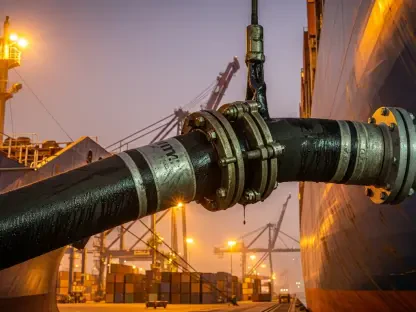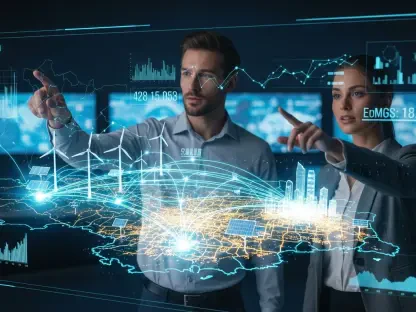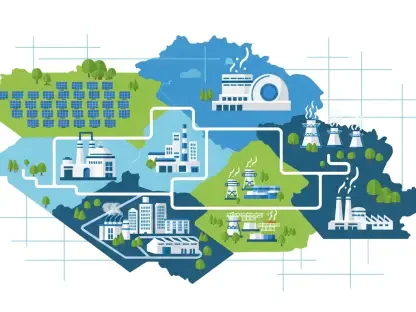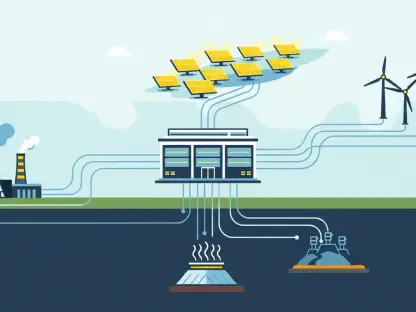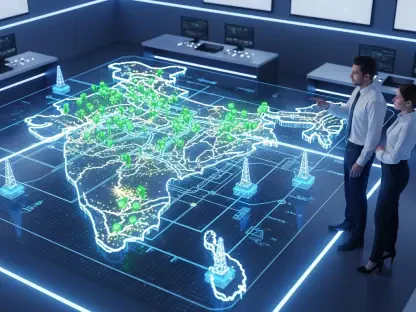Mouser Electronics has recently launched the latest installment of its Empowering Innovation Together (EIT) technology series, directing attention to the integration of renewable energy within smart grid technology. This series underscores the pivotal role of Artificial Intelligence (AI) and 5G in enhancing sustainable grid management, providing substantial advancements in power usage monitoring, energy distribution, and facilitating a two-way communication system between the grid and its users. The shift towards smart grid systems is not merely a technological evolution but a necessity in our quest for a sustainable energy future.
Technological Advancements Shaping Smart Grid Systems
The Role of AI and 5G in Sustainable Grid Management
The advent of AI and 5G heralds a new era of efficiency and resilience in smart grid management. AI-driven predictive analytics allow for real-time monitoring and decision-making that significantly improves the management of electrical grids. By analyzing vast amounts of data from various sources, AI can predict demand spikes and direct energy flows to where they are needed most, reducing waste and preventing outages. Coupled with 5G’s low-latency communication, these systems can react instantly to changing conditions, ensuring a stable and efficient power supply.
The combination of AI and 5G also brings forth the potential for enhanced energy distribution systems. Traditional energy grids operate in a one-way flow from power plants to consumers. However, smart grids with AI and 5G capabilities support two-way communication and energy flow, allowing for decentralized energy production. This means that households with solar panels or wind turbines can not only use the energy they generate but also feed excess power back into the grid, contributing to overall energy stability. This two-way interactivity marks a significant advancement towards a truly resilient and sustainable grid system.
Decentralized Energy Systems and Their Importance
The move towards decentralized energy systems represents a fundamental shift in how electricity is produced and distributed. Unlike traditional grids that rely on a few centralized power plants, decentralized systems integrate multiple renewable energy sources such as solar, wind, and hydroelectric power into the grid. This not only augments the grid’s capacity to meet rising electricity demands but also enhances its flexibility and resilience against disruptions. In an era where renewable energy is becoming more accessible and affordable, decentralized systems are poised to become the backbone of our sustainable energy future.
Moreover, decentralized systems are crucial for supporting the burgeoning electric vehicle (EV) market. As the global adoption of EVs accelerates, the demand for charging infrastructure intensifies. Incorporating renewable energy into smart grids ensures that this demand is met in an environmentally friendly way. Decentralized systems can effectively distribute power to charging stations, alleviating the load on traditional power plants and reducing reliance on fossil fuels. This approach not only supports the transition to electric vehicles but also promotes a cleaner and more efficient energy landscape.
Expert Insights and Discussions
Key Conversations on Smart Grid Integration and Reliability
Mouser’s EIT series includes compelling discussions with leading energy experts, shedding light on critical aspects of smart grid implementation. Raymond Yin’s conversations with Chris Irwin from the U.S. Department of Energy and Del Stephens from Summit Human Capital provide valuable insights into the integration of the Internet of Things (IoT) within smart grids. By leveraging IoT technologies, smart grids can achieve unprecedented levels of monitoring and control, allowing for more effective management of energy resources and enhancing the overall reliability of the grid.
Ensuring the reliability and resilience of smart grids is paramount, especially in the face of increasing climate volatility and energy demands. The discussions emphasize the necessity of robust infrastructure and advanced technologies to mitigate potential vulnerabilities. For instance, IoT sensors can detect anomalies in real-time, enabling swift responses to prevent outages or mitigate their impact. These advancements are instrumental in maintaining a reliable energy supply, which is critical for both everyday life and emergency situations.
The Role of Electric Vehicles in Energy Management
Electric Vehicles (EVs) play a pivotal role in the broader vision of smart grid technology, acting not just as consumers of energy but also as dynamic components of the grid. During periods of low demand, EVs can be charged using excess renewable energy, while during peak times, their stored energy can be fed back into the grid to help stabilize supply. This bidirectional flow of energy, facilitated by smart grid technology, transforms EVs into mobile energy storage units, enhancing grid flexibility and reliability.
Furthermore, integrating EVs into smart grids contributes to a more sustainable energy ecosystem. As the transportation sector increasingly shifts towards electrification, the use of renewable energy to charge EVs becomes crucial in reducing carbon emissions. Smart grids enable efficient energy management, ensuring that the electricity used for charging EVs is sourced from renewable generation, thus promoting a cleaner environment. The discussions in Mouser’s series highlight the potential of EVs to not only revolutionize transportation but also to significantly impact energy management and sustainability.
Comprehensive Resources for Engineering Professionals
Technical Articles, Use Cases, and Multimedia Content
Mouser’s EIT series provides a wealth of resources for engineering professionals, offering detailed technical articles that delve into the intricacies of smart grid technology. These articles cover a wide range of topics, from the specific hardware required for smart grid systems to case studies demonstrating successful implementations. By providing in-depth analyses and real-world examples, these resources aim to equip engineers with the knowledge and tools needed to innovate within the realm of smart grid technology.
In addition to written content, the series includes infographics and videos that visually explain complex concepts, making them accessible to a broader audience. These multimedia resources complement the technical articles, offering interactive and engaging ways to understand the benefits and challenges of transitioning to smart grid systems. For professionals seeking to stay ahead in the field, this combination of textual and visual content serves as an invaluable reference to understand and implement the latest advancements in smart grid technology.
Subscriber-Exclusive Content and Continuing Education
One of the standout features of Mouser’s EIT series is its offering of subscriber-exclusive content. This includes advanced technical documents, webinars, and interactive workshops designed to provide deeper insights into specific aspects of smart grid technology. By subscribing, engineering professionals gain access to cutting-edge research and development information that can inform their projects and enhance their expertise. This exclusive content ensures that subscribers are well-equipped to tackle the complex challenges associated with smart grid implementation.
The ongoing nature of the EIT program also contributes to continuing education for engineering professionals. Since its inception in 2015, the program has evolved to address emerging trends and technologies, reflecting the dynamic nature of the electronics industry. Through continuous updates and new episodes, the program provides professionals with up-to-date knowledge and fosters a community of innovation and learning. This commitment to education underscores Mouser’s role as a leader in empowering the engineering community with the resources and knowledge necessary to drive technological advancement.
Conclusion
Mouser Electronics has recently introduced a new episode in its Empowering Innovation Together (EIT) technology series, focusing on the integration of renewable energy into smart grid technology. This latest series highlights the crucial role that Artificial Intelligence (AI) and 5G play in advancing sustainable grid management. By implementing these technologies, significant improvements are achieved in monitoring power usage, optimizing energy distribution, and creating a robust two-way communication system between the grid and its users. The transition to smart grid systems represents more than just technological progress; it’s a vital step toward securing a sustainable energy future. As demand for renewable energy sources continues to grow, the need for efficient and intelligent grid management becomes increasingly important. AI and 5G provide the necessary tools to ensure that energy generation and consumption are balanced effectively, thus reducing waste and enhancing overall grid reliability. Embracing smart grid technologies is essential in our drive to create a more sustainable and efficient energy landscape for future generations.


